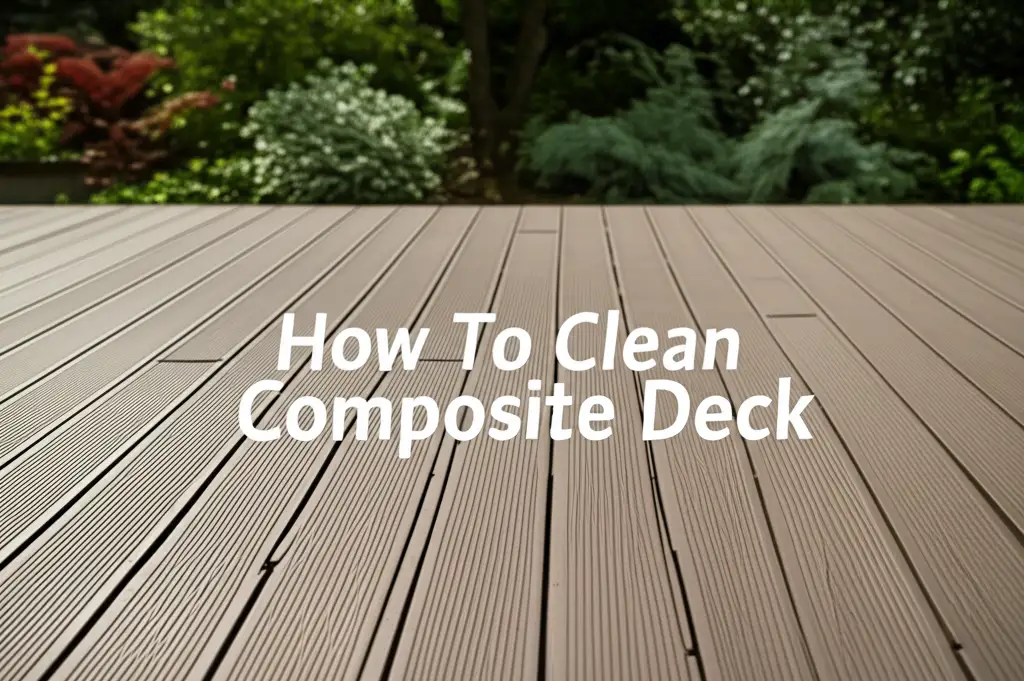· Memorial Care · 12 min read
How To Clean Bronze Grave Marker

Restore Shine: How To Clean Bronze Grave Markers Safely
Caring for a bronze grave marker is an act of love. These lasting tributes honor the memory of those we cherish. Over time, exposure to weather can cause bronze grave markers to tarnish. They collect dirt and develop an uneven patina. You can learn how to clean bronze grave markers to restore their beauty. This guide provides clear steps to clean and preserve these important memorials.
I understand the desire to keep these markers looking their best. It reflects the respect we hold for the person remembered. Proper cleaning protects the marker’s surface and ensures its longevity. We will discuss understanding bronze, gathering your supplies, and using gentle methods. We will also cover dealing with tough issues and protecting the bronze for the future. You will feel confident in your ability to care for this special memorial.
Takeaway:
- Use only gentle, non-abrasive methods to clean bronze grave markers.
- Always test cleaning solutions on a small, hidden area first.
- Apply a protective wax or lacquer after cleaning to preserve the marker’s shine.
To clean a bronze grave marker, first, remove loose debris with a soft brush. Then, wash the marker gently with plain water and a mild dish soap solution, using a soft cloth. Rinse thoroughly, dry completely, and consider applying a protective wax. Avoid harsh chemicals or abrasive tools.
Understanding Bronze and Its Patina
Bronze is a metal alloy, mostly copper and tin. This combination gives it strength and a beautiful golden-brown color. When bronze sits outside, it reacts with air and moisture. This reaction creates a layer called a patina. Patina is often a green or bluish-green film. It forms a natural protective layer over the metal. Some people value this natural patina for its antique look.
However, patina can become uneven or discolored due to dirt, pollution, or lichen growth. This can make the bronze grave marker look neglected. Distinguishing between a natural, even patina and unwanted grime is important. Our goal is to clean the marker without harming its integrity or removing a desired, even patina. You should avoid harsh scrubbing. You must also avoid chemicals that strip the bronze bare. This understanding helps us choose the best cleaning approach for your specific marker.
Essential Supplies for Cleaning Bronze Markers
Before you start cleaning, gather all your necessary supplies. Having everything ready makes the process smoother. You will need simple, gentle tools. These items protect the bronze surface from damage.
Here is a list of what I recommend:
- Soft-bristle brush: A soft toothbrush or a non-metallic scrub brush works well. Use it to remove loose dirt and debris.
- Mild dish soap: Choose a gentle, pH-neutral dish soap. This avoids harsh chemicals that can strip the bronze.
- Clean water: You can use a spray bottle or a bucket of water. Fresh, clean water is essential for rinsing.
- Soft cloths or sponges: Microfiber cloths or soft sponges are ideal. They clean the surface without scratching.
- Rubber gloves: Protect your hands from dirt and cleaning solutions.
- Protective wax or lacquer (optional): This helps to seal and protect the bronze after cleaning. It also restores shine.
- Plastic scraper (optional): For very stubborn, stuck-on debris like lichen or bird droppings. Use with extreme caution.
Avoid using steel wool, wire brushes, or abrasive pads. These items will scratch the bronze surface. This can cause more damage than good. Never use strong acids, ammonia-based cleaners, or bleaches. These can severely corrode the bronze. Using the right tools protects the marker and extends its life.
Preparing the Bronze Grave Marker for Cleaning
Proper preparation is a key step for any cleaning task. It ensures safety for the marker and for you. This initial phase removes loose debris. It also helps you assess the marker’s condition.
Start by gathering your chosen supplies at the site. First, clear away any loose leaves, twigs, or other debris from the marker. You can use your gloved hands or the soft-bristle brush for this. Brush gently to avoid scratching the surface. Look closely at the bronze surface. Note areas with heavy dirt buildup, green patina, or other stains. This inspection helps you decide where to focus your cleaning efforts.
If the marker is particularly dirty, you might gently rinse it with plain water first. Use a spray bottle or pour water slowly. This helps loosen some dirt before you apply any cleaning solution. Do not use high-pressure water, as it can damage the bronze. Always work in a calm, controlled manner. I always take a moment to pause and observe. This helps me avoid any hurried mistakes.
Gentle Cleaning Methods for Bronze Markers
When cleaning a bronze grave marker, start with the gentlest method. This approach minimizes any risk to the metal. You want to remove dirt without harming the bronze itself. I always begin with simple soap and water.
First, mix a small amount of mild dish soap with clean water. You only need a few drops of soap in a bucket of water. Dip a soft cloth or sponge into this solution. Gently wipe down the entire surface of the bronze marker. Work in small sections if the marker is large. Apply light pressure. Do not scrub hard. If you encounter areas with slightly more buildup, you can use the soft-bristle brush. Gently agitate the dirt with the brush.
Once you have cleaned a section, rinse it thoroughly with clean water. A spray bottle works well for rinsing. You can also use a clean, damp cloth. Make sure all soap residue is gone. Soap left on the bronze can attract more dirt later. Repeat this process until the entire marker is clean. This method is safe for most bronze markers. It often removes general dirt and grime effectively. For cleaning tasks involving light residues or general maintenance around the home, you might use similar gentle methods, perhaps even a vinegar solution, as detailed in how to clean glass with vinegar. Remember, the goal is gentle restoration, not harsh stripping.
Dealing with Stubborn Stains and Corrosion
Sometimes, gentle soap and water are not enough. Bronze grave markers can develop stubborn stains or uneven corrosion. These might include bird droppings, mineral deposits, or aggressive green patina. When facing these challenges, you need slightly stronger, but still safe, methods.
For localized stubborn spots, you can make a paste. Mix baking soda with a small amount of distilled water. Create a thick paste. Apply this paste directly to the stained area. Let it sit for about 15-20 minutes. The baking soda is mildly abrasive and helps lift stains. After waiting, gently rub the paste with a soft cloth or sponge. Rinse the area thoroughly with clean water. This method often works well for light corrosion or persistent dirt.
Another option for stubborn green spots, which could be mold or severe patina, is a mixture of white vinegar and flour. This creates a slightly acidic paste. Combine equal parts white vinegar and flour to make a thick consistency. Apply this paste to the affected areas. Let it sit for 30 minutes to an hour. The acid in the vinegar helps to dissolve the corrosion. Gently scrub with a soft brush and rinse well. You can find more ideas for using vinegar as a cleaner in other parts of your home, such as when you learn how to clean mold with vinegar. Always test these methods on an inconspicuous spot first. This ensures they do not harm the bronze. I once had a tough spot on a marker. The baking soda paste made a real difference. Be careful not to let acidic solutions sit too long, as they can alter the bronze’s appearance if overused.
For more severe corrosion or dark spots, you might consider using specific bronze cleaning products. Look for those labeled as safe for bronze. Follow the product instructions carefully. These specialized cleaners often contain mild acids or chelating agents. They target corrosion without damaging the base metal. Always wear gloves when using these products. Rinse the marker completely after use.
Restoring and Protecting the Bronze Surface
After cleaning, the bronze grave marker may look a bit dull. This is because cleaning removes surface dirt and some of the natural oils. The final step is to restore its luster and protect it from future tarnishing. This step also helps to slow down the formation of new corrosion.
To restore shine, you can use a bronze polish. Make sure the polish is specifically for bronze or other non-ferrous metals. Apply a small amount to a clean, soft cloth. Rub it gently onto the bronze surface. Follow the polish’s instructions regarding application and buffing. This brings out the metal’s natural gleam. It gives the marker a fresh, cared-for look.
For long-term protection, I highly recommend applying a protective wax or clear lacquer. This creates a barrier between the bronze and the elements. A good quality microcrystalline wax, often used in museum conservation, works very well. Apply a thin, even coat of wax using a soft cloth. Let it dry to a haze, then buff it gently with another clean, soft cloth. This wax layer repels water and prevents oxygen from reaching the bronze. This significantly slows down the tarnishing process. Some people might consider this step similar to how they apply a protective layer on other metal items in their home, like an oil-rubbed bronze faucet. Knowing how to protect various bronze surfaces helps maintain their appearance and extend their life.
If you choose a clear lacquer, ensure it is designed for outdoor metal use. Lacquers offer a more durable, but less reversible, protective layer. Applying it evenly requires careful attention. Always follow the product’s specific instructions. This final protective step is vital for keeping the bronze grave marker beautiful for years to come.
Common Mistakes to Avoid When Cleaning Bronze
Cleaning a bronze grave marker effectively means knowing what not to do as much as what to do. Avoiding common mistakes protects the marker from permanent damage. I have seen markers damaged by improper cleaning.
Here are some key mistakes to steer clear of:
- Using Abrasive Materials: Never use steel wool, wire brushes, sandpaper, or harsh scrubbing pads. These materials scratch the bronze surface. Scratches create tiny grooves where dirt and moisture can collect. This actually speeds up future corrosion. Always use soft cloths, sponges, or very soft-bristle brushes.
- Applying Harsh Chemicals: Avoid strong acids (like muriatic acid), ammonia, bleach, or oven cleaners. These chemicals can chemically react with the bronze. They will strip the patina entirely and may cause irreparable pitting or discoloration. Always opt for mild, pH-neutral cleaners or specialized bronze solutions.
- High-Pressure Washing: Do not use pressure washers. The strong force of water can erode the bronze. It can also loosen or damage the marker itself. A gentle stream from a hose or a spray bottle is sufficient.
- Leaving Cleaning Solutions to Dry: Always rinse the marker thoroughly after cleaning. Any cleaning solution left on the surface can dry and leave residues. These residues can attract new dirt or even react with the bronze over time.
- Ignoring a Test Spot: Before applying any new cleaner or method to the entire marker, test it. Choose a small, inconspicuous area. This allows you to see how the bronze reacts. If you see any negative changes, stop. This prevents widespread damage. This principle applies to many cleaning tasks, such as when dealing with stains on walls, where testing helps ensure no damage occurs.
- Over-Cleaning: Frequent, aggressive cleaning can be harmful. It can strip away the protective patina too often. This exposes the raw bronze to the elements more frequently. Clean only when necessary. Focus on gentle maintenance.
By avoiding these pitfalls, you help preserve the bronze grave marker’s beauty and structural integrity. Your careful approach ensures the memorial remains a lasting tribute.
Frequently Asked Questions
How often should I clean a bronze grave marker?
The cleaning frequency depends on the environment. Markers in areas with heavy pollution or frequent rain may need cleaning once a year. Markers in sheltered or cleaner areas might only need attention every few years. Observe the marker’s condition. Clean it when dirt or uneven patina becomes noticeable.
Can I use household items to clean bronze?
Yes, you can use several household items. Mild dish soap mixed with water is a safe and effective general cleaner. For more stubborn spots, a paste of baking soda and water works well. A paste of white vinegar and flour can help with green corrosion. Always use these gently.
What is patina, and should I remove it?
Patina is a layer that forms naturally on bronze due to oxidation. It is often green or bluish-green. Patina can protect the bronze underneath. You should not aim to remove all patina unless it is uneven, discolored, or obscuring inscriptions. Gentle cleaning removes dirt but preserves the natural, even patina.
How can I prevent future tarnishing of the bronze?
After cleaning, apply a protective layer. A good quality microcrystalline wax or a clear, outdoor-grade lacquer works best. This barrier shields the bronze from moisture and air. It significantly slows down the tarnishing process. Reapply this protective layer periodically.
Are there any professional services for bronze grave marker cleaning?
Yes, there are professional monument cleaning and restoration services. These experts have specialized knowledge and tools. They can handle severe corrosion or damage that you might not be able to manage yourself. Consider a professional if the marker is very old or badly degraded.
What should I do if the bronze is severely pitted or damaged?
If the bronze grave marker shows severe pitting, deep corrosion, or structural damage, do not attempt to fix it yourself with basic cleaning. Contact a professional monument restorer or conservator. They have the expertise to repair and stabilize severely damaged bronze memorials without causing further harm.
Conclusion
Caring for a bronze grave marker is an important act. It helps maintain the dignity and beauty of a lasting tribute. We have covered how to clean bronze grave marker safely and effectively. You now understand the nature of bronze and its patina. You know what supplies you need. You also have clear steps for gentle cleaning.
Remember to start with mild solutions like soap and water. Move to slightly stronger methods like baking soda or vinegar pastes for tougher stains. Always test cleaners in a hidden spot first. The most crucial step is to protect the bronze after cleaning. A good quality wax or lacquer will keep it shining and protected from the elements. This effort ensures the bronze grave marker remains a beautiful memorial for generations. Your care preserves the legacy and honors the memory of those cherished individuals. Continue to provide this gentle care, and the marker will stand as a bright symbol of remembrance.
- bronze cleaning
- grave marker care
- monument restoration
- headstone cleaning
- outdoor cleaning tips




